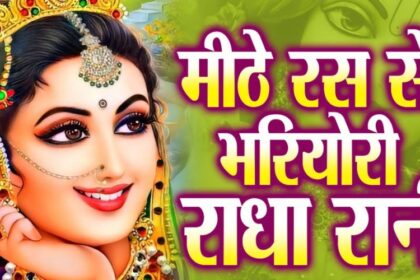Pencil drawing, an age-old art form, has been a means of expression for artists for centuries. From the earliest cave drawings to contemporary masterpieces, the humble pencil has played a crucial role in the development of visual art. This article delves into the intricacies of pencil drawing, exploring its history, techniques, and significance in the modern art world.
History of Pencil Drawing
The history of pencil drawing dates back to ancient times. Early humans used charcoal and other rudimentary tools to create images on cave walls. However, the pencil as we know it today emerged in the 16th century with the discovery of graphite in Borrowdale, England. This material, combined with a wooden casing, gave birth to the modern pencil.
During the Renaissance, artists like Leonardo da Vinci and Michelangelo used pencils to sketch preliminary studies for their paintings and sculptures. The precision and control offered by pencils made them an invaluable tool for capturing intricate details and exploring composition.
The Evolution of Pencil Drawing
Pencil drawing has evolved significantly over the centuries. In the 19th century, the development of different grades of graphite allowed artists to achieve a wider range of tones and textures. This period saw the rise of detailed pencil portraits and landscapes, with artists like J.M.W. Turner and Jean-Auguste-Dominique Ingres showcasing the versatility of the medium.
The 20th century brought further innovation with the introduction of colored pencils. Artists like Georges Seurat and Edward Hopper experimented with these new tools, adding vibrant hues to their drawings. Today, pencil drawing encompasses a broad spectrum of styles and techniques, from hyper-realistic renderings to abstract compositions.
Techniques in Pencil Drawing
Mastering pencil drawing requires a deep understanding of various techniques. Here are some fundamental approaches that artists use to create compelling pencil drawings:
1. Hatching and Cross-Hatching
Hatching involves drawing parallel lines to create shading and texture. Cross-hatching builds on this by adding a second set of lines at an angle to the first, resulting in a more intricate and darker shading. This technique is ideal for creating depth and dimension in a drawing.
2. Blending
Blending is the process of smoothing out pencil strokes to achieve a soft, seamless transition between tones. Artists use tools like blending stumps, tissues, or even their fingers to achieve this effect. Blending is particularly useful for creating realistic skin textures and smooth surfaces.
3. Stippling
Stippling involves placing small dots on the paper to build up shading and texture. The density and arrangement of the dots determine the darkness and texture of the area. This technique requires patience and precision but can produce incredibly detailed and nuanced drawings.
4. Scribbling
Scribbling may seem chaotic, but it can be a highly effective technique for capturing movement and energy. Artists use quick, random strokes to create a sense of dynamism and spontaneity. This technique is often used in preliminary sketches and expressive drawings.
5. Erasing
Erasing is not just for correcting mistakes; it can also be used creatively to add highlights and texture. Artists can lift graphite from the paper with an eraser to create light areas and contrast. This technique is particularly useful for depicting reflective surfaces and intricate details.
Materials and Tools
To excel in pencil drawing, it’s essential to understand the materials and tools available. Here are some key components:
1. Graphite Pencils
Graphite pencils come in a range of hardness levels, from 9H (hard) to 9B (soft). Hard pencils produce lighter, finer lines, while soft pencils create darker, bolder marks. Artists often use a combination of different pencils to achieve the desired range of tones.
2. Colored Pencils
Colored pencils are made from a combination of pigment, binder, and wax. They offer vibrant colors and can be blended to create smooth transitions. Water-soluble colored pencils allow artists to create watercolor-like effects by adding water to their drawings.
3. Paper
The choice of paper is crucial for pencil drawing. Smooth paper is ideal for detailed work, while textured paper adds character and depth to the drawing. Acid-free paper ensures the longevity of the artwork, preventing yellowing and deterioration over time.
4. Blending Tools
Blending stumps, tortillons, and tissues are commonly used for blending graphite and colored pencils. These tools help artists achieve smooth transitions and soft textures in their drawings.
5. Erasers
Kneaded erasers are versatile tools that can be shaped to lift graphite or colored pencil from the paper. Vinyl erasers are more abrasive and can remove larger areas of pigment. Precision erasers allow for detailed erasing and highlight work.
The Process of Pencil Drawing
Creating a pencil drawing involves several stages, each requiring careful consideration and technique. Here’s a step-by-step guide to the process:
1. Conceptualization and Planning
Every drawing begins with an idea. Artists conceptualize their subject and composition, often making preliminary sketches to explore different angles and perspectives. Planning is essential to ensure the final drawing is well-composed and balanced.
2. Outlining
Once the concept is solidified, artists begin by lightly sketching the basic outlines of the subject. This stage focuses on capturing the overall proportions and placement of elements within the composition. Light, loose lines are used to allow for adjustments and refinements.
3. Detailing
With the basic outlines in place, artists start adding details and refining the shapes. This stage involves careful observation and rendering of intricate elements, such as facial features, textures, and patterns. Artists may use a variety of pencils to achieve different line weights and tones.
4. Shading and Texturing
Shading is a crucial aspect of pencil drawing, adding depth and dimension to the artwork. Artists use techniques like hatching, cross-hatching, and blending to create a range of tones and textures. This stage requires a keen understanding of light and shadow, as well as the ability to render subtle gradations.
5. Final Touches
The final touches involve adding highlights, refining details, and ensuring the overall composition is balanced. Artists may use erasers to lift graphite and create highlights, or add additional layers of shading to deepen the contrast. This stage is where the drawing comes to life, capturing the essence of the subject.
The Significance of Pencil Drawing
Pencil drawing holds a unique place in the world of art. Despite the advent of digital technology and new mediums, the pencil remains a fundamental tool for artists. Here are some reasons why pencil drawing continues to be significant:
1. Accessibility
Pencil drawing is one of the most accessible forms of art. Pencils and paper are readily available and affordable, making it easy for anyone to start drawing. This accessibility has democratized art, allowing people from all walks of life to express themselves creatively.
2. Versatility
Pencils offer unparalleled versatility. They can be used for detailed, realistic renderings or loose, expressive sketches. The range of tones and textures achievable with pencils makes them suitable for a wide variety of styles and subjects.
3. Foundational Skills
Pencil drawing is often the foundation for other forms of art. Many artists start with pencil sketches before moving on to painting, sculpture, or digital art. The skills learned in pencil drawing, such as observation, shading, and composition, are transferable to other mediums.
4. Therapeutic Benefits
Drawing can be a therapeutic activity, providing a sense of calm and focus. The act of creating art can reduce stress, improve concentration, and enhance emotional well-being. Pencil drawing, with its simplicity and meditative nature, is particularly well-suited for art therapy.
Famous Pencil Drawings and Artists
Throughout history, many artists have made significant contributions to the art of pencil drawing. Here are a few notable examples:
1. Leonardo da Vinci
Leonardo da Vinci’s pencil drawings, such as his anatomical studies and sketches for the “Mona Lisa,” are renowned for their precision and detail. His ability to capture the intricacies of the human form and the natural world remains unparalleled.
2. Albrecht Dürer
Albrecht Dürer, a German Renaissance artist, is known for his detailed pencil drawings and engravings. His works, such as “Praying Hands” and “Young Hare,” showcase his mastery of texture and shading.
3. Vincent van Gogh
While Vincent van Gogh is best known for his paintings, his pencil drawings are equally impressive. His sketches, such as “Old Man with His Head in His Hands,” reveal his expressive use of line and texture.
4. M.C. Escher
M.C. Escher’s intricate pencil drawings and prints, featuring impossible constructions and optical illusions, have captivated audiences for decades. His ability to manipulate perspective and create mind-bending images is a testament to his skill and creativity.
Conclusion
Pencil drawing is a timeless art form that continues to inspire and captivate artists and audiences alike. From its humble beginnings to its modern-day applications, the pencil has proven to be an indispensable tool for artistic expression. Whether you’re a seasoned artist or a beginner, the world of pencil drawing offers endless possibilities for creativity and exploration. By mastering the techniques and understanding the materials, you can unlock the full potential of this versatile medium and create stunning works of art.





